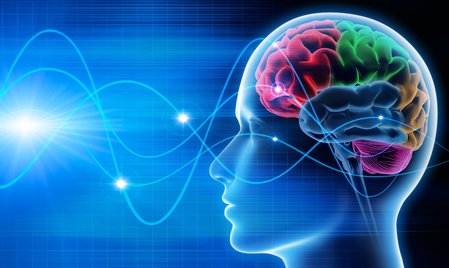Our mind is a machine? Part 4
Today I will touch a very important point, the attention, which is the ability to concentrate the psychic activity, that is, the thought, in a certain object.

Source
Attention is an aspect of perception through which the subject is placed in the most appropriate situation to better perceive a given stimulus. There are three types of care:

a) Involuntary attention: Here the attention of the stimuli of the environment, to which attention is paid without being predisposed to it: the noise of a pump, a toothache or the intense cold, for example They take our attention without wanting it, simply by their own intensity.Source

b) Voluntary attention: The causes for which attention is paid to something do not come from the environment, but from the subject itself. It is the motivation and not the stimulus that makes our attention focus on something specific: a woman who wants to buy a refrigerator will observe, for example, in all the appliance stores; and someone who is thinking about changing the car will look carefully at everyone they see on the street. Source
Often, when a certain type of conflict arises, an effort must be made to maintain attention. This is a very representative example: a student is tired and wants to rest, but the exam date is close and he has to resort to his willpower to maintain attention in the books. That is to say, the attention depends many times on the voluntary effort that is made to fix it, forcing us to be attentive, in spite of the interferences that may arise from the outside or from the subject itself.

c) Regular attention: The origin of this attention derives from the habits of the subject, which induce him to fix according to certain stimuli: an architect will always repair the urbanization of cities and the structure of buildings, while a doctor will look at the sanitary conditions of the place or the physical appearance of the people. It is an almost automatic and unconscious attention. The person with a wide range of interests usually pays attention to many more things than someone who has few, enriching without much effort their experience and their level of knowledge.Source
The determinants of attention come from the individual and from the outside. Motivation is the basic personal determinant; the interests, worries, occupations, desires, aspirations and habits make that each person is fixed in certain things and situations. Logically, the mother of a paralyzed child will pay great attention to health and education problems and to associations for the handicapped, while the owner of a company will always be attentive to labor and economic issues.
External determinants are those that derive from environmental stimuli and its three basic qualities: novelty, intensity and repetition of the stimulus. What is new and very intense or repeated with some frequency, immediately attracts the attention of people.
External determinants attract what we have previously called involuntary attention. This is based on many advertising campaigns that launch novel, intense or striking messages, repeating them in the media, to attract the attention of the subject. In the end, this is more complicated than it seems at first glance, since the novelty, if it becomes repetitive, ceases to be so and loses part of its ability to attract attention.

Source
The attention is selective, the individual looks at what interests him. For example, when reading a newspaper, the headlines are looked at before, deciding whether or not to read the full article; the doctor will be more attracted to health issues, to the executive those related to his company and to the writer the pages of culture. It is so selective that if the subject, among a group of things, finds one that really interests him, the others practically cease to matter.
In the same way, attention can be fixed on an object or situation, but not on several at the same time, since it then disperses and distracts. What it can do is change from one question to another, as the stimuli alternate, varying according to the intensity with which the object attracts and the effort of will that is made in each moment.
Alterations of attention are the distraction, which consists in the concentration of the subject in his inner life, with which he does not attend to external stimuli; the distrastrabillad or lability of attention, which consists in the constant fluctuation of attention, which passes from one object to another without remaining fixed in any; and fatigability, which is manifested by the rapid fatigue of attention: although the subject is very attentive at first, after a while he can not continue concentrating. These alterations are motivated by both organic and psychological disorders.

Source
Any illness, from a flu to a nephritic colic or a cancer, diminishes the capacity of attention, as it happens with psychological disorders. It is typical of the depressive patient to say I have no memory when it really happens is that he does not fix the attention, because it is dominated by his discomfort and inner suffering.
Reference:
http://www.llagasenlaboca.es/el-estres/
https://medlineplus.gov/spanish/ency/article/003257.htm
https://www.lifeder.com/enfermedades-memoria/
Our mind is a machine? Part 1
Our mind is a machine? Part 2
Our mind is a machine? Part 3
Your concept is very nice. Thank you very much for giving us a nice article. It is I who am reading your article. And enjoying read it. Wish you good luck and going on you writing.Keep this up, Followed you for more :)
Thank you
this great post ...
Thank you